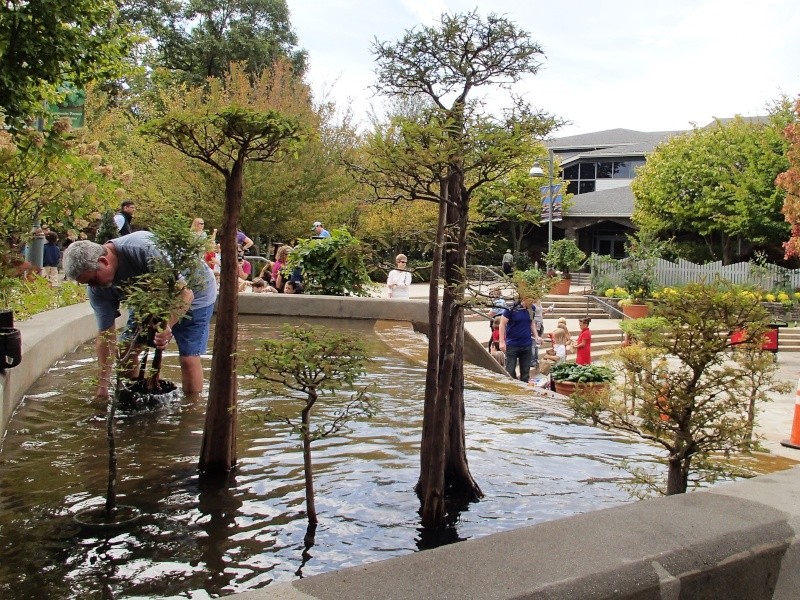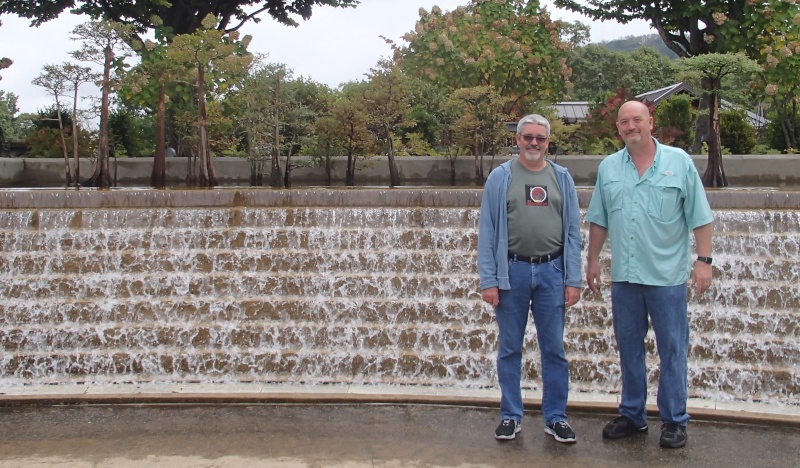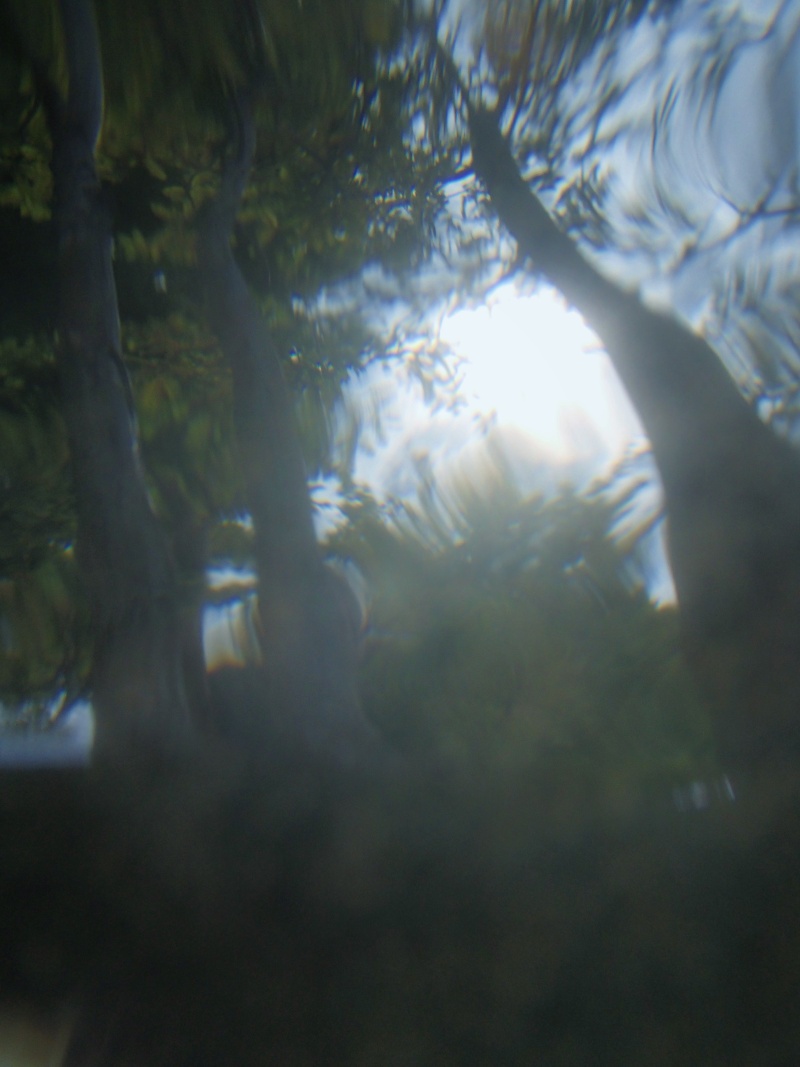American Bonsai at the NC Arboretum
+95
kingsnake
Tom
MKBonsai
BrianS
manumidam
Chris Cochrane
Intricate Simplicity
chench53
KyleT
Maros Belan
DjTommy
Bolero
Gonetopot
Rick36
M. Frary
Van
Toshiro
fiona
Precarious
drbuzzbee
geo
LanceMac10
MichaelS
kimo
Chellis
Leo Schordje
FrankP999
dick benbow
BrianG
crust
TN Jim
Seth Ellwood
Wander
peterkang
Judgie
Kevin S - Wisco Bonsai
Vance Wood
JMcCoy
brett2013
GerhardGerber
lordy
Eric Group
my nellie
steveb
Jaybird
Todd Ellis
jgeanangel
Daygan
AlainK
Richard S
Randy_Davis
Robert J. Baran
David Brunner
William N. Valavanis
Jkd2572
Dale Cochoy
Jesse McMahon
prestontolbert
yamasuri
bingregory
Stephen Krall
DougB
Ashiod
JADunnagan
sayotefries
JudyB
Dan W.
Khaimraj Seepersad
DuncanJH
Dave Murphy
monte
MikeG
augustine
Russell Coker
Kev Bailey
lennard
BigDave
Marty Weiser
Smithy
coh
tmmason10
dorothy7774
gman
Dave Leppo
hometeamrocker
bwaynef
Billy M. Rhodes
Walter Pall
Sam Ogranaja
JimLewis
MartinSweeney
bonsaisr
Auballagh
John Quinn
Arthur Joura
99 posters
Page 26 of 40
Page 26 of 40 •  1 ... 14 ... 25, 26, 27 ... 33 ... 40
1 ... 14 ... 25, 26, 27 ... 33 ... 40 
 Re: American Bonsai at the NC Arboretum
Re: American Bonsai at the NC Arboretum
HEY !!!
whats all this then ???
a thread about bonsai at the north carolina arboretum ???
man-o-man... thats ironic because a friend and i are heading down that way tomorrow !!!
i think there's some kind of expo or something like that going down at the gardens...
hope to see and meet some of you there over the weekend...
(to which some might respond: "not if we see you first"
 )
)
whats all this then ???
a thread about bonsai at the north carolina arboretum ???
man-o-man... thats ironic because a friend and i are heading down that way tomorrow !!!
i think there's some kind of expo or something like that going down at the gardens...
hope to see and meet some of you there over the weekend...
(to which some might respond: "not if we see you first"


Kevin S - Wisco Bonsai- Member
 Re: American Bonsai at the NC Arboretum
Re: American Bonsai at the NC Arboretum
Dave Leppo wrote:i think Mr, Joura and Mr. Pall may be there
NO WAAAYYYY !!!
now that would be super rad !

Kevin S - Wisco Bonsai- Member
 Re: American Bonsai at the NC Arboretum
Re: American Bonsai at the NC Arboretum
tmmason10 wrote:Thanks for having a running post going, you have some wonderful trees in your exibit!
There is no question about that. My wire and I visited it this summer as well as the National Bonsai Arboritum in DC, NC display was at least as nice maybe better.

Vance Wood- Member
 Carolina Bonsai Expo 2015
Carolina Bonsai Expo 2015
Here are a few highlights from the 20th Carolina Bonsai Expo... A huge thanks to Arthur for all of his hard work this year and all the past years putting together this event!!
jgeanangel- Member
 Re: American Bonsai at the NC Arboretum
Re: American Bonsai at the NC Arboretum
incredible time this past week-end...
great show
great people
great area
pics to follow when i get time (some are on instagram now - beercitysnake)
but in the mean-time here is my favorite (paraphrased) quote from walter pall:
"the elephants do not even bother to ignore the hyenas and jackals"
perhaps you can guess what he was alluding to...

great show
great people
great area
pics to follow when i get time (some are on instagram now - beercitysnake)
but in the mean-time here is my favorite (paraphrased) quote from walter pall:
"the elephants do not even bother to ignore the hyenas and jackals"
perhaps you can guess what he was alluding to...

Kevin S - Wisco Bonsai- Member
 Re: American Bonsai at the NC Arboretum
Re: American Bonsai at the NC Arboretum
Hope there weren't any 'gators in that "swamp", John. Great exhibit.

fiona- Member
 Re: American Bonsai at the NC Arboretum
Re: American Bonsai at the NC Arboretum
fiona wrote:Hope there weren't any 'gators in that "swamp", John. Great exhibit.
jgeanangel- Member
 Re: American Bonsai at the NC Arboretum
Re: American Bonsai at the NC Arboretum
I saw it! I saw it!
You could have frightened the C**p out of visitors by having it move around.
You could have frightened the C**p out of visitors by having it move around.

fiona- Member
 Re: American Bonsai at the NC Arboretum
Re: American Bonsai at the NC Arboretum
john... glad to see you back in the video directors chair !
had a blast hanging out with you and ken (everyone else too)
john neglected to mention that walter pall picked the black creek display for the top group display of the show !!!
(i imagine you are too humble to mention it... and it sounds better when someone else blows your horn for you )
)
so CONGRATS !!!


had a blast hanging out with you and ken (everyone else too)
john neglected to mention that walter pall picked the black creek display for the top group display of the show !!!
(i imagine you are too humble to mention it... and it sounds better when someone else blows your horn for you
 )
)so CONGRATS !!!


Kevin S - Wisco Bonsai- Member
 Re: American Bonsai at the NC Arboretum
Re: American Bonsai at the NC Arboretum
beer city snake wrote:
john neglected to mention that walter pall picked the black creek display for the top group display of the show !!!
(i imagine you are too humble to mention it... and it sounds better when someone else blows your horn for you)
so CONGRATS !!!


Beautiful show and the scale of the display on the Black Creek was massive. At first I thought the bald cypress are permanent part of the display and Arthur has to be knee deep in water every week to trim them, until John filming the pots and I recognize the flat top ball cypress that John showed in his previous videos. Congrat and glad you still have a strong back John.
van

Van- Member
 Re: American Bonsai at the NC Arboretum
Re: American Bonsai at the NC Arboretum
Black Creek's display was amazing! I enjoyed the video of it being assembled, thanks!!
Thanks to Arthur for another wonderful event, and to all the clubs and people who make it so!
Gerry
Thanks to Arthur for another wonderful event, and to all the clubs and people who make it so!
Gerry

chench53- Member
 Re: American Bonsai at the NC Arboretum
Re: American Bonsai at the NC Arboretum
Thanks for posting Kevin... It was a fun weekend....just wish there was time to breath somewhere along the way:)
We need longer days on this weekend each year Arthur...can you arrange that??
We need longer days on this weekend each year Arthur...can you arrange that??
jgeanangel- Member
 Re: American Bonsai at the NC Arboretum
Re: American Bonsai at the NC Arboretum
no sweat john...
by friday nite i will be sending you and arthur all the unaltered images and videos i took (well not all the videos ) and you two can then do with them what you will (post, edit, crop, etc i dont mind)
) and you two can then do with them what you will (post, edit, crop, etc i dont mind)
but until then i am posting some images i made of the exhibit...
i am not posting any pictures of entire trees, but rather elements that i found interesting...
there were many people taking many pictures and i will leave the images of entire trees/displays to you, AJ and others...
from the jim doyle experience...
the lighting was challenging at best, so i just had fun playing with the images i ended up with, hoping to make some look more like paintings than photographs...
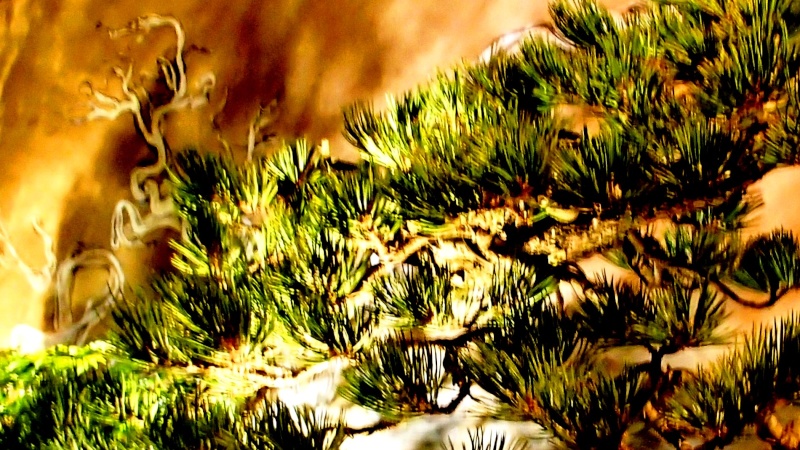
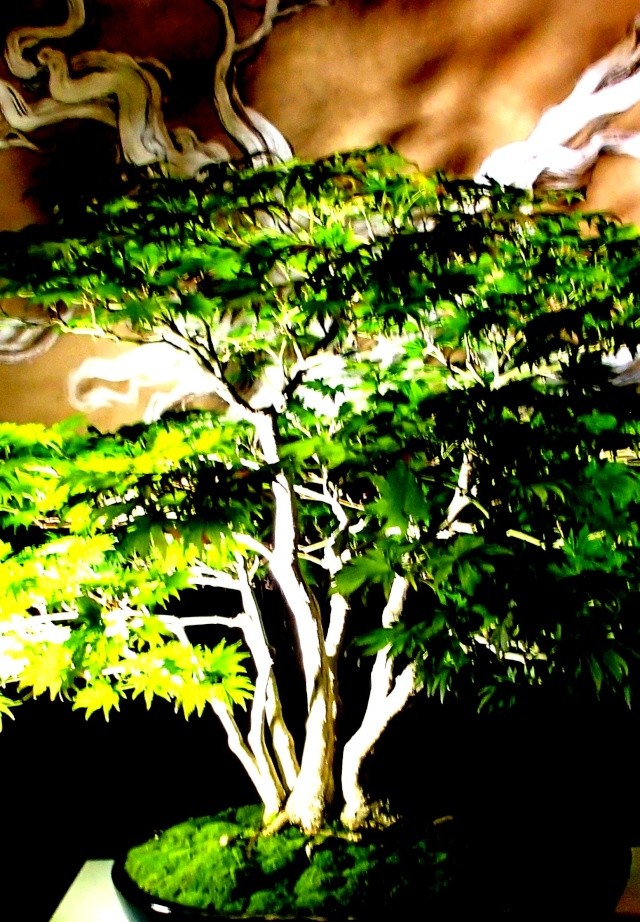


these two accents tickled me (and the second one, walter pall as well)


b&w elements of my 2nd favorite tree
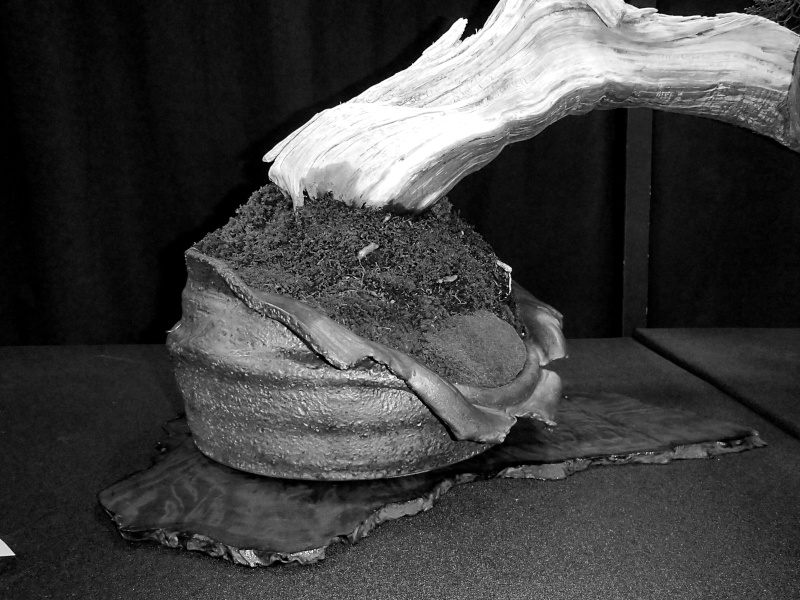
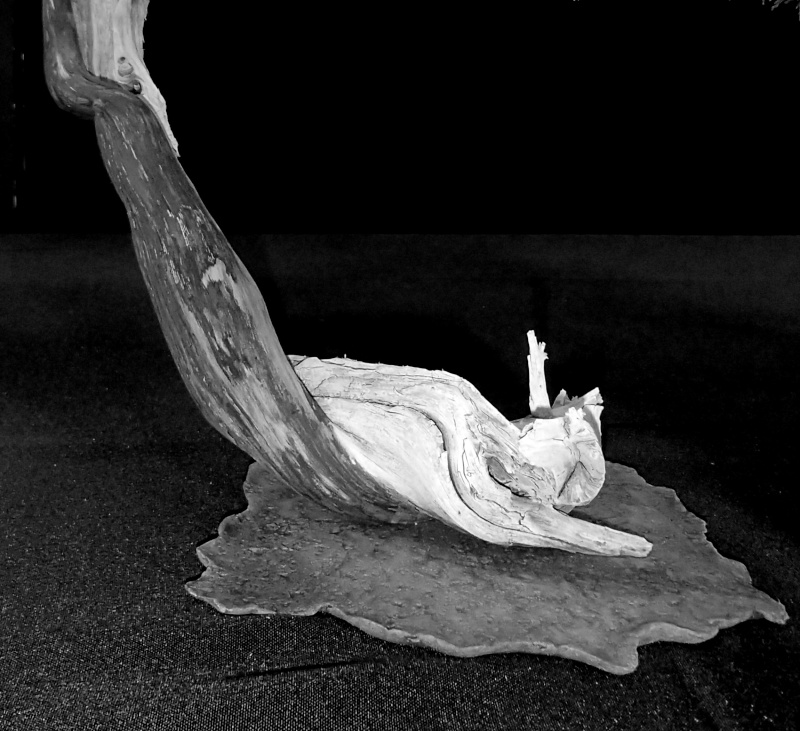
and while i am on the b&w trip, i really dug this rock and like it even better in stark b&w...
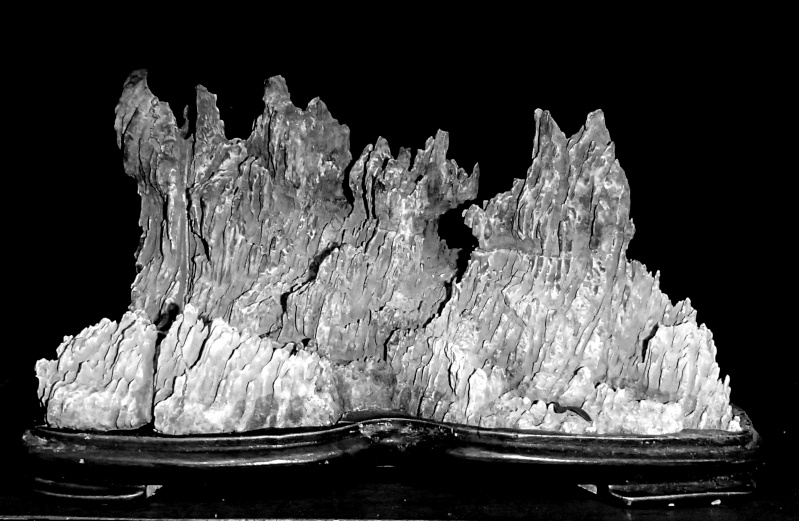
this entire display was difficult to photograph without background "noise" as it had no backdrop (same with the cypress forest),
but i liked this angle:
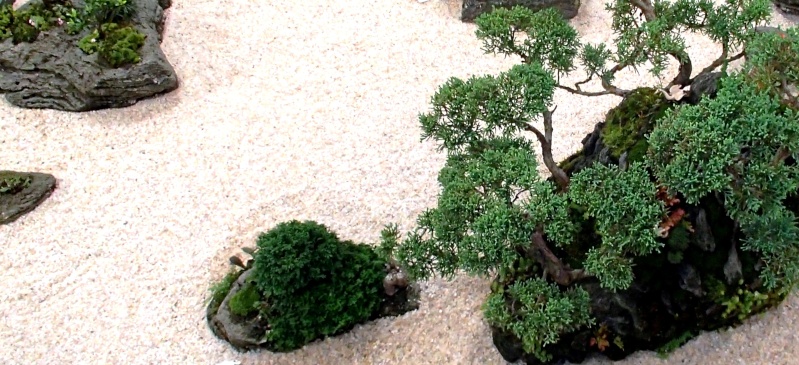
and finally, just one aspect of my favorite tree of them all...
this water elm really knocked me out !

DYNAMITE !!!
for those whos material i have shown above, sorry for taking the liberties and if an entire image does not get posted and you want one shown, let me know and i will try to accommodate...
by friday nite i will be sending you and arthur all the unaltered images and videos i took (well not all the videos
but until then i am posting some images i made of the exhibit...
i am not posting any pictures of entire trees, but rather elements that i found interesting...
there were many people taking many pictures and i will leave the images of entire trees/displays to you, AJ and others...
from the jim doyle experience...
the lighting was challenging at best, so i just had fun playing with the images i ended up with, hoping to make some look more like paintings than photographs...




these two accents tickled me (and the second one, walter pall as well)


b&w elements of my 2nd favorite tree


and while i am on the b&w trip, i really dug this rock and like it even better in stark b&w...

this entire display was difficult to photograph without background "noise" as it had no backdrop (same with the cypress forest),
but i liked this angle:

and finally, just one aspect of my favorite tree of them all...
this water elm really knocked me out !

DYNAMITE !!!
for those whos material i have shown above, sorry for taking the liberties and if an entire image does not get posted and you want one shown, let me know and i will try to accommodate...

Kevin S - Wisco Bonsai- Member
 Re: American Bonsai at the NC Arboretum
Re: American Bonsai at the NC Arboretum
That suiseki is beautiful; nice pictures!

Intricate Simplicity- Member
 Re: American Bonsai at the NC Arboretum
Re: American Bonsai at the NC Arboretum
After my sabbatical I continue what we have started. Some requested to see a clear description of the Naturalistic Bonsai Style with examples. I warn folks that the examples are not always easy to understand. It takes a lot of experience in viewing trees and sorting styles to see the difference. And then everything is more or less ambiguous. There is no black and white here. Evey example has some features of another style too. While I certainly could have erred when posting examples I ask folks to lean back and consider that they may not have the viewing experience to see what is meant. Some think this is superfluous and may not have the will to see - that's fine with me. I don't write for those anyway.
So here is the Naturalistic Bonsai Style:
Pro:
Natural
lots of soul
Becoming popular
Neither ideal or unique
Back to the roots
sometimes 'impossible' material can be used
Impressive holes and scars on broadleaved trees
Even deadwood very natural
Con:
Untidy
License for crap
Controversial
Chaotic
Misunderstood


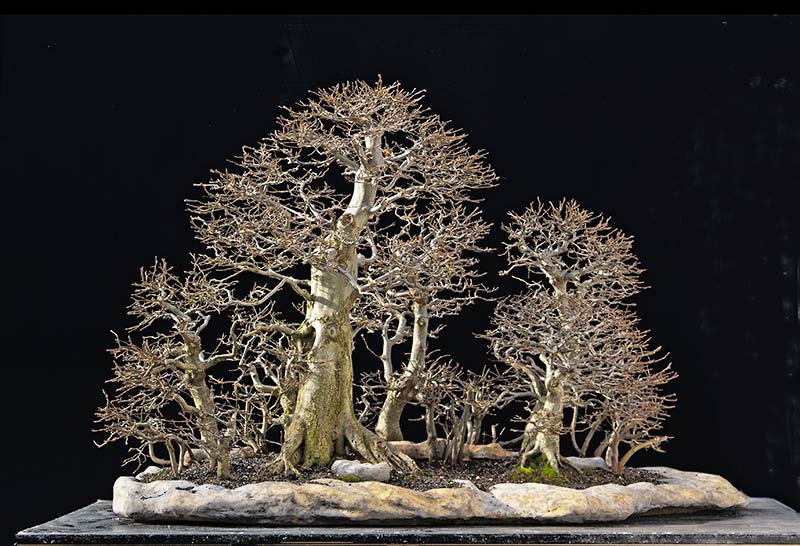

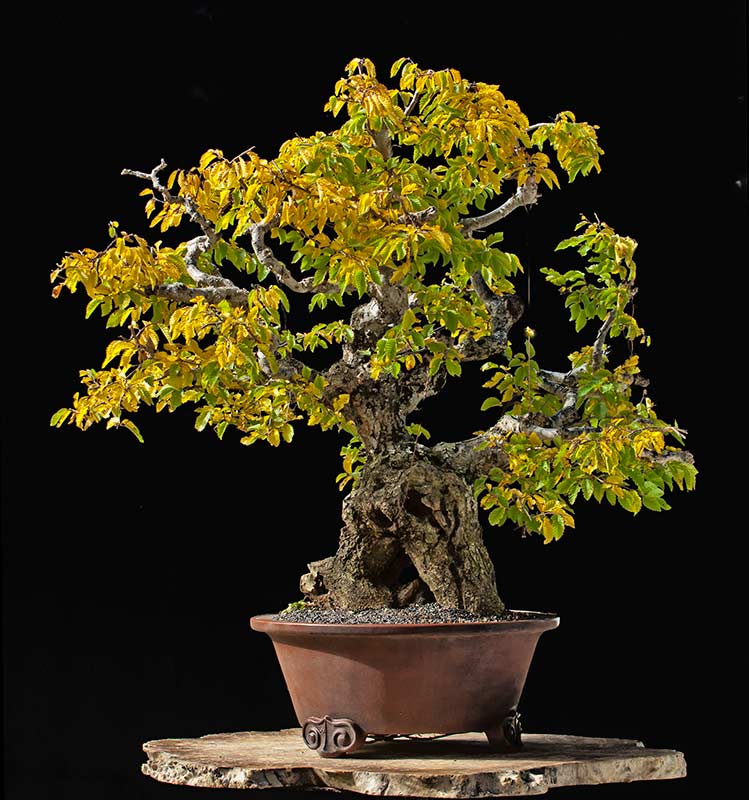







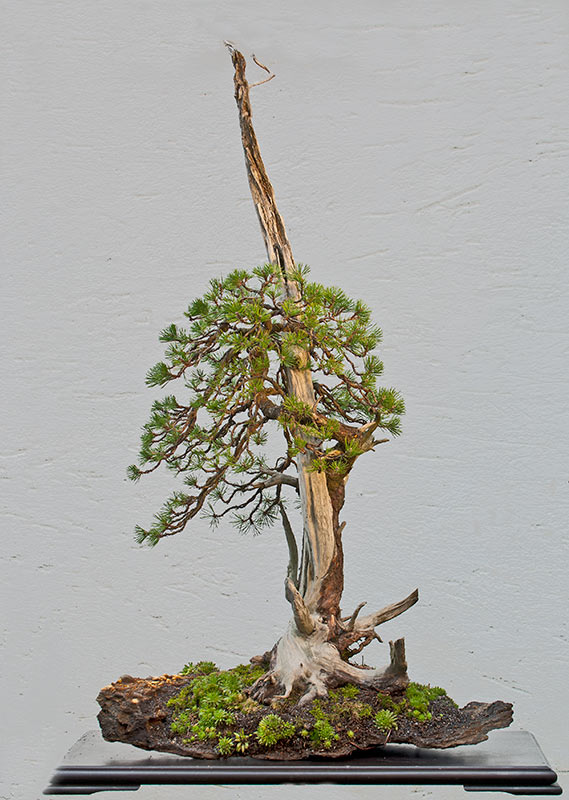






So here is the Naturalistic Bonsai Style:
Pro:
Natural
lots of soul
Becoming popular
Neither ideal or unique
Back to the roots
sometimes 'impossible' material can be used
Impressive holes and scars on broadleaved trees
Even deadwood very natural
Con:
Untidy
License for crap
Controversial
Chaotic
Misunderstood




















Walter Pall- Member
 Re: American Bonsai at the NC Arboretum
Re: American Bonsai at the NC Arboretum
For me, this is one of the most magnificent trees I have ever seen. It may be because I just spent a day in a very old apple orchard but this tree is incredibly captivating. Not that the others aren't just as awesome, specifically the bottom 5 among others.
Thanks for sharing Walter!

Sam Ogranaja- Member
 Re: American Bonsai at the NC Arboretum
Re: American Bonsai at the NC Arboretum
Many thanks for sharing Walter, very inspirational.
Cheers Graham
Cheers Graham

gman- Member
 Re: American Bonsai at the NC Arboretum
Re: American Bonsai at the NC Arboretum
Thanks Walter for continuing this discussion.
I have had a close look at each of your examples. It is very true that some of these trees could easily fall into the old traditional way of styling from the East. The first two pines, the third Spruce, the apple could easily have come from a Japanese magazine. This kind of shows that the line between these styles is very thin or blurred and there is no real demarcation between one and the other unless we look at the extremes of each.
I really like some of these trees. The second last one is a great depiction of an old conifer in the mountains. Very natural. The last one too.
Some of the deciduous trees you posted have the appearence of trees in their last few years of life. While they may look natural, for me they lack the visual appeal of a tree with more vitality. (that may be just a personal preference) Do you agree that a full healthy tree with a vigorous crown can be just as naturalistic as one which appears to have been hit by one too many lightning strikes?
Trees 6,7 and 8 do not look very naturalistic to me yet. Perhaps in a few more years? At the moment they still have the ''attacked by a human'' feel to them. In my opinion you don't need over-do the ''untidyness'' to convey the natural. But I totally understand what you are trying to achieve.
The design of the Larch crown does not look at all naturalistic to me. That is not to say it is bad or wrong of course just that it gives me the feeling that the wild trunk and domesticated top do match each other.
The scots pine(?) I love the wild and natural branch development on this tree. I think I have seen it before when it was slighly more leafy. This tree has a very bright future IMO but to me it appears to be betting a bit too twiggy and this feature is detracting from it's ''treeness'' and starting to make it appear more shrub like. Do you agree? If so, how will you resolve this issue in the future? If not please explain your viewpoint and your future plans for this tree.
Thanks again for posting these pictures. I for one am very interested.
I have had a close look at each of your examples. It is very true that some of these trees could easily fall into the old traditional way of styling from the East. The first two pines, the third Spruce, the apple could easily have come from a Japanese magazine. This kind of shows that the line between these styles is very thin or blurred and there is no real demarcation between one and the other unless we look at the extremes of each.
I really like some of these trees. The second last one is a great depiction of an old conifer in the mountains. Very natural. The last one too.
Some of the deciduous trees you posted have the appearence of trees in their last few years of life. While they may look natural, for me they lack the visual appeal of a tree with more vitality. (that may be just a personal preference) Do you agree that a full healthy tree with a vigorous crown can be just as naturalistic as one which appears to have been hit by one too many lightning strikes?
Trees 6,7 and 8 do not look very naturalistic to me yet. Perhaps in a few more years? At the moment they still have the ''attacked by a human'' feel to them. In my opinion you don't need over-do the ''untidyness'' to convey the natural. But I totally understand what you are trying to achieve.
The design of the Larch crown does not look at all naturalistic to me. That is not to say it is bad or wrong of course just that it gives me the feeling that the wild trunk and domesticated top do match each other.
The scots pine(?) I love the wild and natural branch development on this tree. I think I have seen it before when it was slighly more leafy. This tree has a very bright future IMO but to me it appears to be betting a bit too twiggy and this feature is detracting from it's ''treeness'' and starting to make it appear more shrub like. Do you agree? If so, how will you resolve this issue in the future? If not please explain your viewpoint and your future plans for this tree.
Thanks again for posting these pictures. I for one am very interested.

MichaelS- Member
 Re: American Bonsai at the NC Arboretum
Re: American Bonsai at the NC Arboretum
If different bonsai styles exist then it must be possible to define the essential characteristics and at least general parameters of each style. However, for the reasons that Walter has already stated this is not so simple. It's not an exact science and there will always be trees which combine features of different styles and others which defy convenient classification all together.
Some have suggested that considering this is a thankless and indeed pointless task anyway so why bother? Well I think that Kyle T has spelt out the benefits quite well in a previous post so I wont repeat his points. I will only add that at least some of the stylistic differences referred to in this thread appear self evident to me and if the differences can (at least in some cases) be plainly seen then it would be perverse not to at least acknowledge them.
Having said that, I must confess that I'm struggling to come up with a unique set of essential characteristics for the different styles myself at this point. The problem of course is in the complexity of the subject. How might we reduce this complexity so as to focus on the essence of each style?
Perhaps the solution is to go back to basics. Instead of seeking to identify subtle differences between complex examples perhaps we should look instead for typical or even extreme examples of different styles where those fundamental differences are somewhat more exaggerated?
For example I would consider this tree to be strongly neo-classical,

But what in my view makes it neo-classical? Obviously it conforms to one of the recognised neo-classical tree forms, Myogi ( informal upright) but more than that the structural elements are neo-classical. The single trunk line from base to apex, the regular branch placement, left, right, left, right, the fact that the branches exit the trunk at 90 degrees and are almost perfectly horizontal. The trunk is not perfectly vertical, Chokkan (formal upright) but the apex is still within the footprint of the base so it is not shakkan (slanting). Despite the irregularity in the trunk the overall outline is both very symmetrical and also rather triangular. Its height is also approximately the same as its width.
It's a highly stylised tree. It would still be stylised even if it were a conifer but as a deciduous it is positively abstract!
These features are no accident they are clearly designed. The bonsai world is full of trees which conform to these recognised structural norms.
Do you like the tree? I think most bonsai enthusiast would. It is not the very best example of it's kind but it's very nice. Being neo-classical is not an insult.
Now compare it with this. I would consider this tree to be strongly naturalistic,

But again, what in my view makes it strongly naturalistic? Well for a start it doesn't easily conform to any of the recognised neo-classical tree forms. This isn't just stating the obvious, some neo-classical tree forms can be quite naturalistic, at least for coniferous trees. This isn't one of them though. It is debateable whether this tree has one trunk which splits into three, essentially three trunks or a primary trunk and a secondary one (Sokan - twin trunk style). However it is clearly not a clump or a group. The tree has many branches but almost none exit their respective trunk at 90 degrees. None are really horizontal either. They appear random and chaotic (but in reality have almost certainly been very carefully placed). The overall outline is again quite symmetrical (not necessarily a naturalistic characteristic) but it certainly isn't triangular.
You could argue that it is also a very stylised tree but it certainly isn't abstract. It could be described as some type of Broom form but it isn't really Hokidachi (formal broom) because of the multiple trunks. It's what Walter has previously called the Informal Broom form. This is exactly the kind of form which a mature, wild grown deciduous tree commonly takes when growing in relatively open ground. This in my view is what makes it "naturalistic".
Do you like it or do you think it's a mess? I think most bonsai enthusiasts would like this tree. It is a very literal and easily identifiable image of a tree in nature and in my opinion it is clearly NOT a classical or neo-classical Japanese style tree.
Of course not all non-classical/neo-classical trees are naturalistic. Some are highly abstract. I could go on to talk about this tree which I think is highly modernistic,

This also doesn't really conform to any of the neo-classical tree forms but it's distinctly un-naturalistic. It's a very abstract image. You could call this the "broccoli on dead wood" style but I know that many would consider such a derogatory comment blasphemy so I'll follow convention and call it modernistic style.
but I know that many would consider such a derogatory comment blasphemy so I'll follow convention and call it modernistic style.
Anyway, I hope you take my point. The objective was to try and present three different tree which exhibited typical characteristic of their respective styles in a way which made their respective differences obvious. You can decide whether I did a worthwhile job of it. If you disagree feel free to rip my argument to pieces.
I have nothing invested in it beyond a couple of hours of my time and a genuine interest in advancing my own understanding.
Regards
Richard
Some have suggested that considering this is a thankless and indeed pointless task anyway so why bother? Well I think that Kyle T has spelt out the benefits quite well in a previous post so I wont repeat his points. I will only add that at least some of the stylistic differences referred to in this thread appear self evident to me and if the differences can (at least in some cases) be plainly seen then it would be perverse not to at least acknowledge them.
Having said that, I must confess that I'm struggling to come up with a unique set of essential characteristics for the different styles myself at this point. The problem of course is in the complexity of the subject. How might we reduce this complexity so as to focus on the essence of each style?
Perhaps the solution is to go back to basics. Instead of seeking to identify subtle differences between complex examples perhaps we should look instead for typical or even extreme examples of different styles where those fundamental differences are somewhat more exaggerated?
For example I would consider this tree to be strongly neo-classical,

But what in my view makes it neo-classical? Obviously it conforms to one of the recognised neo-classical tree forms, Myogi ( informal upright) but more than that the structural elements are neo-classical. The single trunk line from base to apex, the regular branch placement, left, right, left, right, the fact that the branches exit the trunk at 90 degrees and are almost perfectly horizontal. The trunk is not perfectly vertical, Chokkan (formal upright) but the apex is still within the footprint of the base so it is not shakkan (slanting). Despite the irregularity in the trunk the overall outline is both very symmetrical and also rather triangular. Its height is also approximately the same as its width.
It's a highly stylised tree. It would still be stylised even if it were a conifer but as a deciduous it is positively abstract!
These features are no accident they are clearly designed. The bonsai world is full of trees which conform to these recognised structural norms.
Do you like the tree? I think most bonsai enthusiast would. It is not the very best example of it's kind but it's very nice. Being neo-classical is not an insult.
Now compare it with this. I would consider this tree to be strongly naturalistic,

But again, what in my view makes it strongly naturalistic? Well for a start it doesn't easily conform to any of the recognised neo-classical tree forms. This isn't just stating the obvious, some neo-classical tree forms can be quite naturalistic, at least for coniferous trees. This isn't one of them though. It is debateable whether this tree has one trunk which splits into three, essentially three trunks or a primary trunk and a secondary one (Sokan - twin trunk style). However it is clearly not a clump or a group. The tree has many branches but almost none exit their respective trunk at 90 degrees. None are really horizontal either. They appear random and chaotic (but in reality have almost certainly been very carefully placed). The overall outline is again quite symmetrical (not necessarily a naturalistic characteristic) but it certainly isn't triangular.
You could argue that it is also a very stylised tree but it certainly isn't abstract. It could be described as some type of Broom form but it isn't really Hokidachi (formal broom) because of the multiple trunks. It's what Walter has previously called the Informal Broom form. This is exactly the kind of form which a mature, wild grown deciduous tree commonly takes when growing in relatively open ground. This in my view is what makes it "naturalistic".
Do you like it or do you think it's a mess? I think most bonsai enthusiasts would like this tree. It is a very literal and easily identifiable image of a tree in nature and in my opinion it is clearly NOT a classical or neo-classical Japanese style tree.
Of course not all non-classical/neo-classical trees are naturalistic. Some are highly abstract. I could go on to talk about this tree which I think is highly modernistic,

This also doesn't really conform to any of the neo-classical tree forms but it's distinctly un-naturalistic. It's a very abstract image. You could call this the "broccoli on dead wood" style
Anyway, I hope you take my point. The objective was to try and present three different tree which exhibited typical characteristic of their respective styles in a way which made their respective differences obvious. You can decide whether I did a worthwhile job of it. If you disagree feel free to rip my argument to pieces.
I have nothing invested in it beyond a couple of hours of my time and a genuine interest in advancing my own understanding.
Regards
Richard

Richard S- Member
 Re: American Bonsai at the NC Arboretum
Re: American Bonsai at the NC Arboretum
MichaelS
I didn't read your comments before making my post but it is interesting that you say you see no real demarcation between styles except in extremes.
Obviously the distinction will be clearest in extreme examples which is kind of the point I was trying to make. However I don't think that means that different styles don't exist or that it is of no value to consider them. Just that there is and in some cases always will be some cross over.
What do you think of the examples I chose?
I don't mean do you like the trees or find them pleasing (that's your prerogative of course). I mean do you accept that they represent different styles?
It seems self evident to me that they are fundamentally different in stylistic terms and that each exhibits at least some of the fundamental characteristics that define their type.
Having said that, I freely admit that I can't narrow those characteristics down to a set of unique stylistic parameters in my own mind yet so I accept you point that the lines remain blurred. However, I also believe that if you can perceive those differences then ultimately it must be possible to articulate them in a coherent way.
I haven't got there yet but I'm finding the journey very interesting.
Regards
Richard
I didn't read your comments before making my post but it is interesting that you say you see no real demarcation between styles except in extremes.
Obviously the distinction will be clearest in extreme examples which is kind of the point I was trying to make. However I don't think that means that different styles don't exist or that it is of no value to consider them. Just that there is and in some cases always will be some cross over.
What do you think of the examples I chose?
I don't mean do you like the trees or find them pleasing (that's your prerogative of course). I mean do you accept that they represent different styles?
It seems self evident to me that they are fundamentally different in stylistic terms and that each exhibits at least some of the fundamental characteristics that define their type.
Having said that, I freely admit that I can't narrow those characteristics down to a set of unique stylistic parameters in my own mind yet so I accept you point that the lines remain blurred. However, I also believe that if you can perceive those differences then ultimately it must be possible to articulate them in a coherent way.
I haven't got there yet but I'm finding the journey very interesting.
Regards
Richard

Richard S- Member
 Re: American Bonsai at the NC Arboretum
Re: American Bonsai at the NC Arboretum
Hi Richard,
Personally, I don't really feel the need to classify bonsai. Whenever I look at a new tree I try to observe it without pre thought to what I have seen before and just let the tree tell me it's story. If it speaks to me and I like what it's saying then all is good. If I don't like something about it for whatever reason then I might point out what I see to anyone interested. For me, two ''styles'' are enough. The traditional ''pine tree'' style as your example with the trident maple, and the natural style where one follows a plant's natural habit of growth.(more or less) I have no problem with any style if it is ''believable'' to my eyes. It could be (and often is) an idealized representation of the natural tree. If I can imagine the tree sitting in it's surroundings - be it a mountain top, field, forest, cliff or whatever and it ''works'', it is a good tree. Well designed. If however the design has some feature which distracts from the illusion, then I would regard the tree as inferior.
The concept of ''neo classical'' bothers me. If we are to assume that classical bonsai is a style (and I can only accept it as a style if you include all the great ''naturalistic bonsai produced in Japan over the last several decades) and that style is learned and taught by it's traditional practitioners to others, ( ie: the Japanese masters teach other Japanese people but they also teach westerners who teach more westerers) then are they not then practicing classical bonsai design? When does it suddenly become neo classical? Do you have to be Japanese to practice classical bonsai art? What if a European was born there but then moved to the US? Would he be practicing classical or neo classical, Is it only classical if it is practiced where it originated? What if he lived there for 10 years, 10 months, 10 days?
But really what interest me is the trees and moving to a naturalistic design is the right thing to do for me. Steering clear of the ''Mount Fuji Trident Maple style'' is a good thing. Nothing is ''wrong'' in art but if you are trying to achieve a miniature version of a trident maple, this kind of thing definately is wrong simply because you won't achieve what you set out to do.
Your example of a ''naturalistic'' tree. It is hard for me to comment on this tree without seeming negative to Walter. It is not a criticism of the artist as Walter has produced some magnificent pieces and I regard him highly for his thoughtful points so my comments are exclusive to this tree! Some folks on this forum seem to be rather sensitve to critique but surely if we post a picture it should be to open to discussion? By all means disagree!!
You can classify this tree as naturalistic if you like. That is not really important to me. What is important to me is the quality of the tree as presented. Although you can find all the features of the specimen as naturally occuring, they do not satisfy me. some of those features include: *The similar thickness of some of the primary branches and the secondary and even some tertiary branches. *Many areas with ramification on the tips only. *Lack of grace in the movement of the branching. *Too much disorder and lack of smooth visual rhythm as your eye ascends the trunk. Generally, it doesn't give me the impression of a tree in it's natural habitat. In other words the tree draws your (my) attention to these distractions and away from the ''bigger picture''. So ironically enough, because of these features, and although styled with the intent of ''naturalism'', to me misses the mark and looks ''man made''. The exact opposite to what was intended. IN MY OPINION!!!!!!!!!!!
Remember also I am only going from what I see on the screen in front of me!
Personally, I don't really feel the need to classify bonsai. Whenever I look at a new tree I try to observe it without pre thought to what I have seen before and just let the tree tell me it's story. If it speaks to me and I like what it's saying then all is good. If I don't like something about it for whatever reason then I might point out what I see to anyone interested. For me, two ''styles'' are enough. The traditional ''pine tree'' style as your example with the trident maple, and the natural style where one follows a plant's natural habit of growth.(more or less) I have no problem with any style if it is ''believable'' to my eyes. It could be (and often is) an idealized representation of the natural tree. If I can imagine the tree sitting in it's surroundings - be it a mountain top, field, forest, cliff or whatever and it ''works'', it is a good tree. Well designed. If however the design has some feature which distracts from the illusion, then I would regard the tree as inferior.
The concept of ''neo classical'' bothers me. If we are to assume that classical bonsai is a style (and I can only accept it as a style if you include all the great ''naturalistic bonsai produced in Japan over the last several decades) and that style is learned and taught by it's traditional practitioners to others, ( ie: the Japanese masters teach other Japanese people but they also teach westerners who teach more westerers) then are they not then practicing classical bonsai design? When does it suddenly become neo classical? Do you have to be Japanese to practice classical bonsai art? What if a European was born there but then moved to the US? Would he be practicing classical or neo classical, Is it only classical if it is practiced where it originated? What if he lived there for 10 years, 10 months, 10 days?
But really what interest me is the trees and moving to a naturalistic design is the right thing to do for me. Steering clear of the ''Mount Fuji Trident Maple style'' is a good thing. Nothing is ''wrong'' in art but if you are trying to achieve a miniature version of a trident maple, this kind of thing definately is wrong simply because you won't achieve what you set out to do.
Your example of a ''naturalistic'' tree. It is hard for me to comment on this tree without seeming negative to Walter. It is not a criticism of the artist as Walter has produced some magnificent pieces and I regard him highly for his thoughtful points so my comments are exclusive to this tree! Some folks on this forum seem to be rather sensitve to critique but surely if we post a picture it should be to open to discussion? By all means disagree!!
You can classify this tree as naturalistic if you like. That is not really important to me. What is important to me is the quality of the tree as presented. Although you can find all the features of the specimen as naturally occuring, they do not satisfy me. some of those features include: *The similar thickness of some of the primary branches and the secondary and even some tertiary branches. *Many areas with ramification on the tips only. *Lack of grace in the movement of the branching. *Too much disorder and lack of smooth visual rhythm as your eye ascends the trunk. Generally, it doesn't give me the impression of a tree in it's natural habitat. In other words the tree draws your (my) attention to these distractions and away from the ''bigger picture''. So ironically enough, because of these features, and although styled with the intent of ''naturalism'', to me misses the mark and looks ''man made''. The exact opposite to what was intended. IN MY OPINION!!!!!!!!!!!
Remember also I am only going from what I see on the screen in front of me!

MichaelS- Member
Page 26 of 40 •  1 ... 14 ... 25, 26, 27 ... 33 ... 40
1 ... 14 ... 25, 26, 27 ... 33 ... 40 
 Similar topics
Similar topics» American Bonsai at the NC Arboretum
» WISTERIA BONSAI AT INTERNATIONAL BONSAI ARBORETUM
» Ashville arboretum bonsai
» Show the Autumncolour from your bonsai
» Trip to the Rochester Arboretum
» WISTERIA BONSAI AT INTERNATIONAL BONSAI ARBORETUM
» Ashville arboretum bonsai
» Show the Autumncolour from your bonsai
» Trip to the Rochester Arboretum
Page 26 of 40
Permissions in this forum:
You cannot reply to topics in this forum








